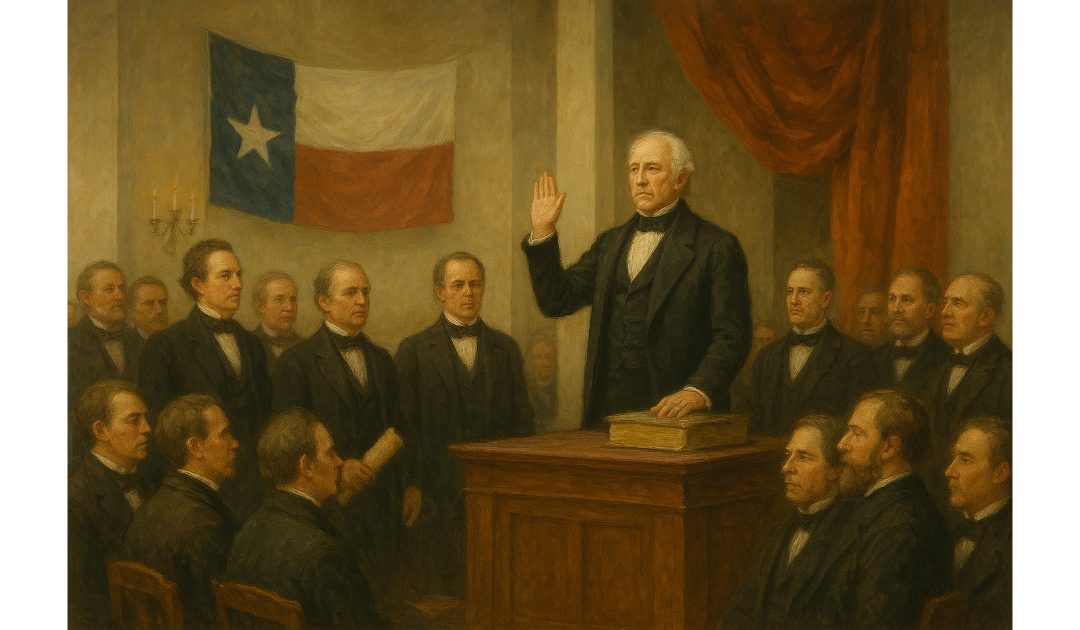On the 22nd of October, 1836, Sam Houston was inaugurated as the first President of the Republic of Texas. I confess that I know little about Sam Houston other than that John Wayne and Richard Widmark were waiting for him to arrive with an army and relieve the siege of the Alamo. So let’s look into him a little.
Early Life and Path to Texas
Born on the 2nd of March, 1793, in Virginia, Sam Houston grew up in Tennessee after his family relocated there following his fathers death. Houston’s early life was characterised by a spirit of adventure and resilience. He spent several years living with the Cherokee Nation, learning their language and culture, which deeply influenced his worldview.
Houston served in the War of 1812 under General Andrew Jackson, gaining valuable military experience. After the war, he pursued a legal and political career, eventually becoming the governor of Tennessee. However, personal struggles, including a failed marriage, led to his resignation and a period of reflection among the Cherokee.
Houston’s Move to Texas
In 1832, Sam Houston arrived in Texas, then a part of Mexico, amid growing unrest among American settlers. The Mexican government’s centralisation efforts and restrictions on American immigration fuelled discontent. Houston quickly became involved in the burgeoning Texas independence movement, leveraging his leadership skills and military background.
The Texas Revolution and Houston’s Leadership
Houston was appointed major general of the Texan Army in 1835 as tensions escalated into open rebellion. The Texas Revolution was marked by key events, including the fall of the Alamo and the Goliad Massacre, where Mexican forces under General Antonio López de Santa Anna brutally suppressed Texan resistance.
Despite early setbacks, Houston strategically withdrew his forces to regroup and train. His decisive leadership culminated in the Battle of San Jacinto on the 21st of April, 1836. Employing the element of surprise, Houston’s troops launched a swift and overwhelming attack on Santa Anna’s army, securing a resounding victory. Santa Anna was captured, effectively ending the war and securing Texas independence.
The Republic of Texas
Following the revolution, the Republic of Texas was established, and Sam Houston was elected its first president in 1836. His presidency focused on stabilising the fledgling nation, fostering diplomatic relations, and addressing economic challenges. Houston advocated for peaceful coexistence with Native American tribes and sought annexation by the United States, recognising the republic’s fragile position.
Houston’s leadership was marked by pragmatism. He reduced military expenditures, promoted trade, and pursued policies aimed at maintaining peace with Mexico while defending Texas sovereignty. After serving his term, he stepped down, honouring the republics’s constitutional limits on consecutive presidencies.
Later Political Career and Annexation
Houston returned to the presidency in 1841 during a period of renewed tension with Mexico. His second term mirrored his earlier focus on diplomacy and fiscal responsibility. However, internal divisions within Texas and ongoing conflicts with Mexico underscored the republics vulnerabilities.
Houston remained a staunch advocate for annexation, believing it essential for the security and economic prosperity of Texas. In 1845, the United States annexed Texas, and Houston transitioned to a new role as a U.S. senator representing the state. His tenure in the Senate was notable for his opposition to the expansion of slavery and his commitment to preserving the Union.
Legacy and Final Years
Sam Houston’s later years were marked by his principled stance against secession during the American Civil War. As governor of Texas, he refused to swear allegiance to the Confederacy, resulting in his removal from office. Despite this, he remained a revered figure for his unwavering dedication to his principles. I think Lincoln would have respected him for that.
Houston passed away on the 26th of July, 1863, in Huntsville, Texas. His legacy endures as a symbol of courage, leadership, and integrity. Cities, monuments, and institutions across Texas bear his name, reflecting his enduring impact on the state’s identity.

